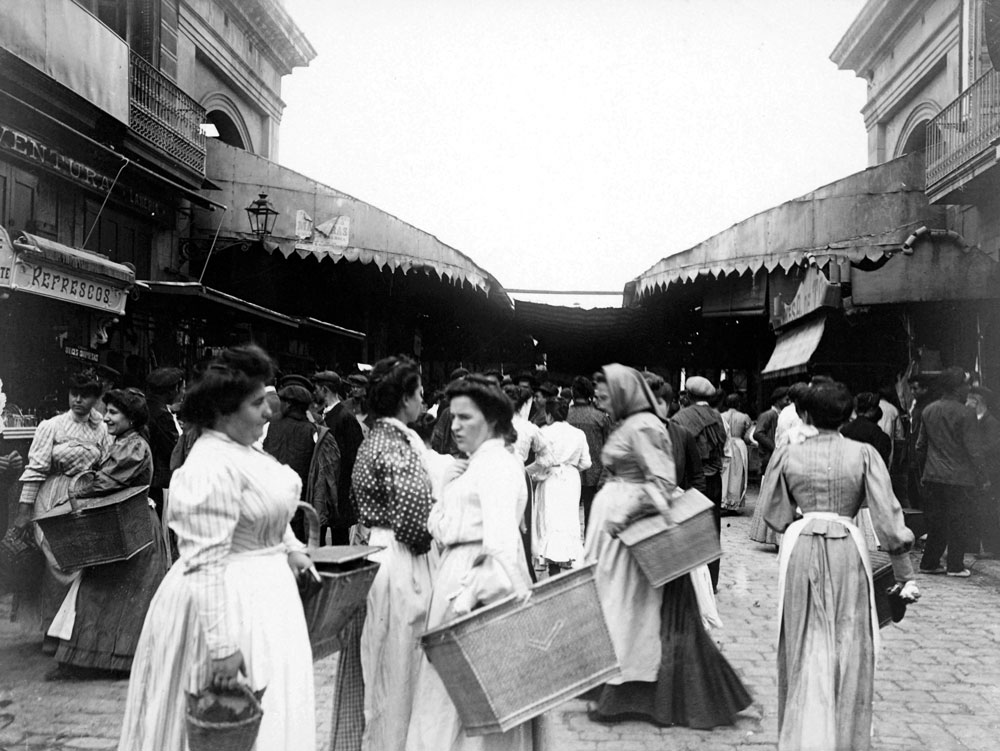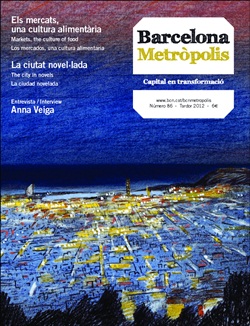
© Frederic Ballell / AFB
The entrance to the Boqueria market from the Rambla, in a photo taken between 1907 and 1908
Barcelona boasts a market tradition that dates back to the 19th century. The emergence of supermarkets and superstores in the 1980s endangered the survival of markets, but architectural renovation and the firm commitment to fresh products have preserved a model. The city now has 40 local markets, which receive some 60 million people a year. Between 30% and 35% of the fresh produce marketed in Barcelona is sold in markets, which overall are the main enterprise in the sale of fresh food.
Markets, distinguished by the variety and the quality of their products and by the personal touch with customers, are now one of the three best-rated services by Barcelona’s inhabitants, after libraries and the metro service.
[Video in Catalan]
Over the following pages we invite you to look back over the evolution of this commercial and gastronomic tradition. Manuel Guàrdia and Marçal Tarragó maintain that the materialisation of Catalan and Mediterranean cuisine has gone hand in hand with the consolidation of our market model. The journalist Trinitat Gilbert and the chef Ada Parellada describe its values: local, fresh and healthy products; a trust-based relationship with the market stall-owner; and the market as a main focal point in the district, a meeting and interaction point, particularly for the elderly. Finally, Joan de Déu Domènech, historian, writer and gastronomist, looks to the future with a certain degree of scepticism.
- Markets and food identity Manuel Guàrdia
- Market cuisine, Catalan cuisine and the Mediterranean diet Manuel Guàrdia
- An axis of the “Barcelona model” Marçal Tarragó
- The university of taste Ada Parellada
- Personal, social and economic health Trinitat Gilbert
- Bludgeoned by reality Joan de Déu Domènech



